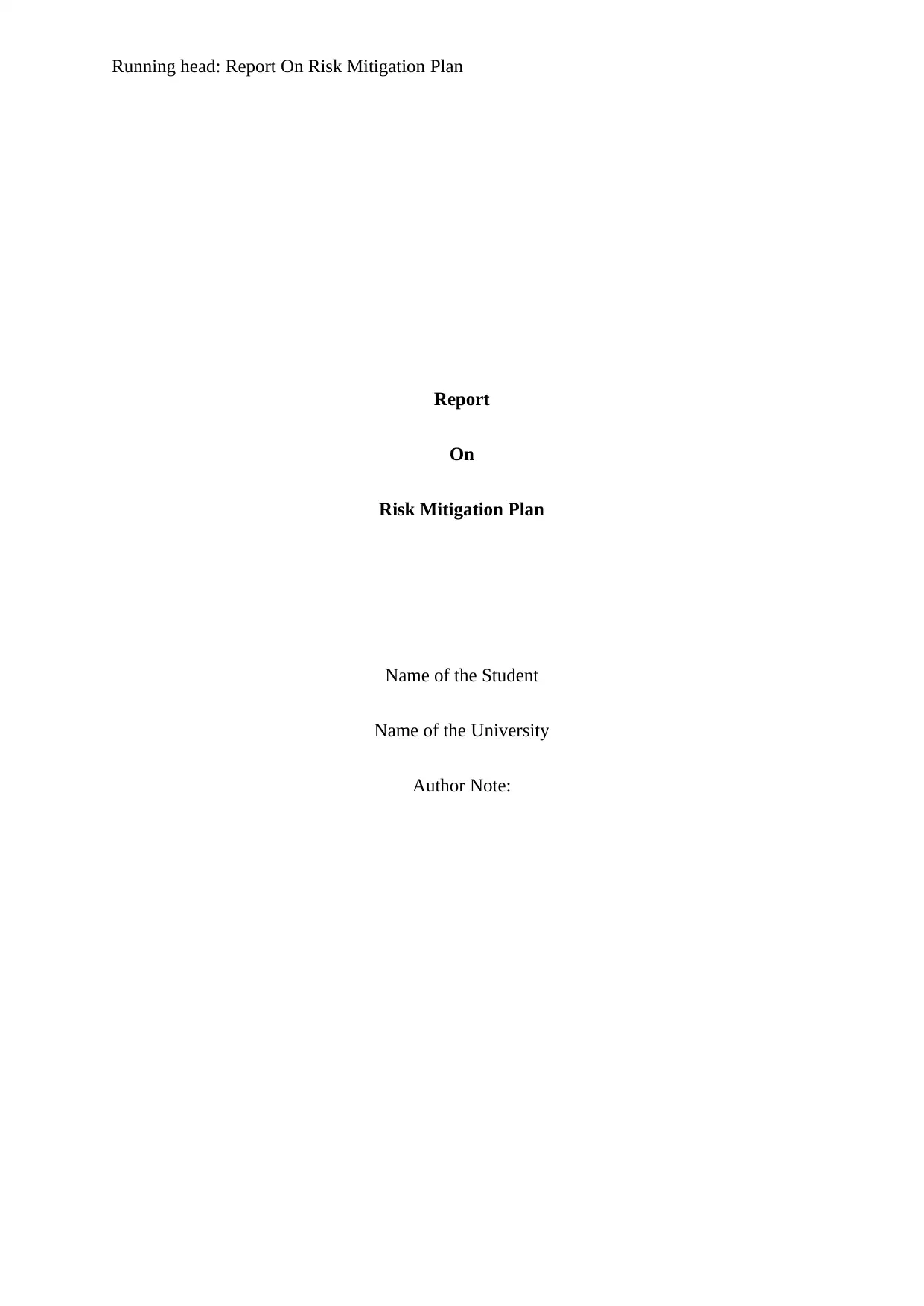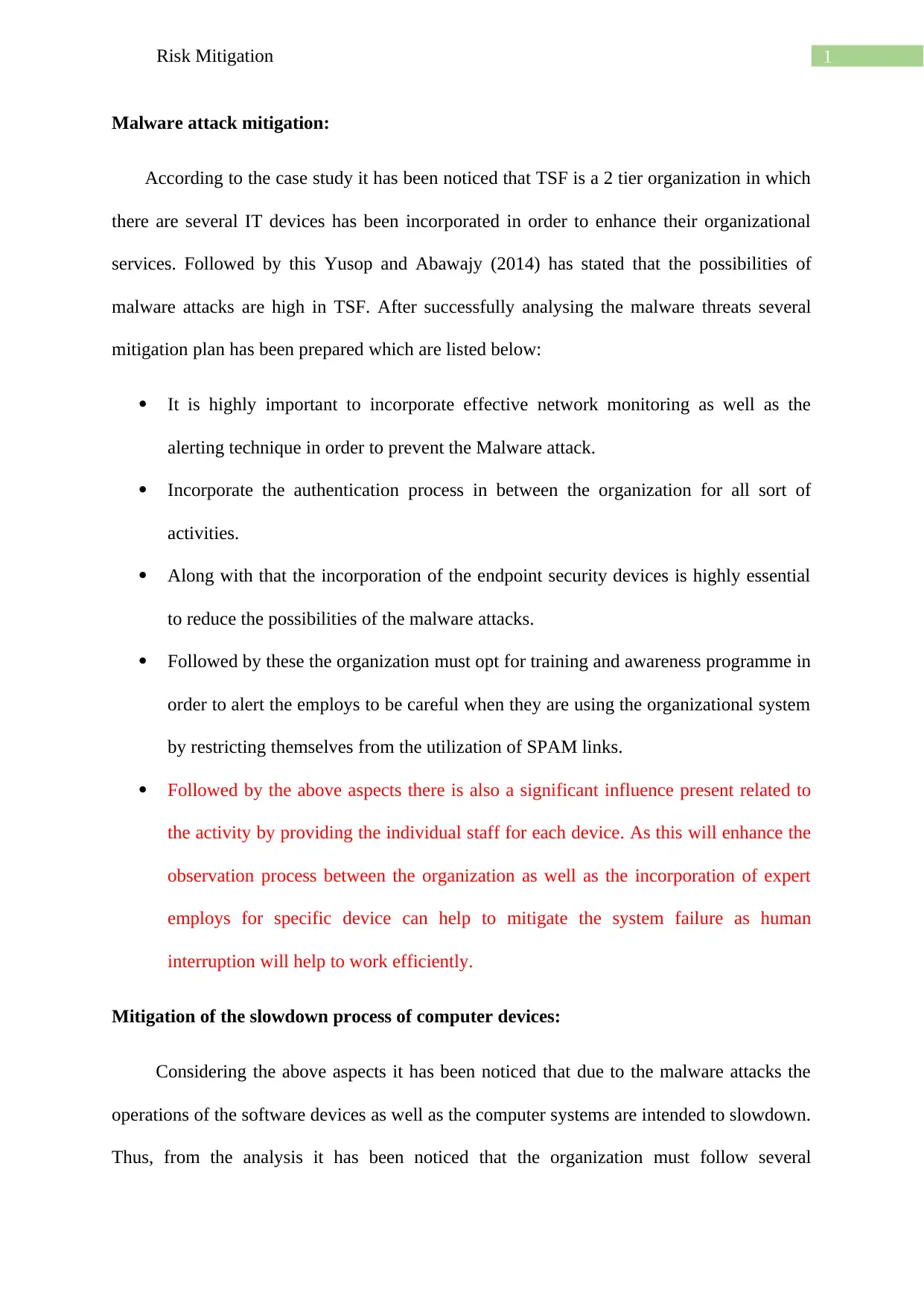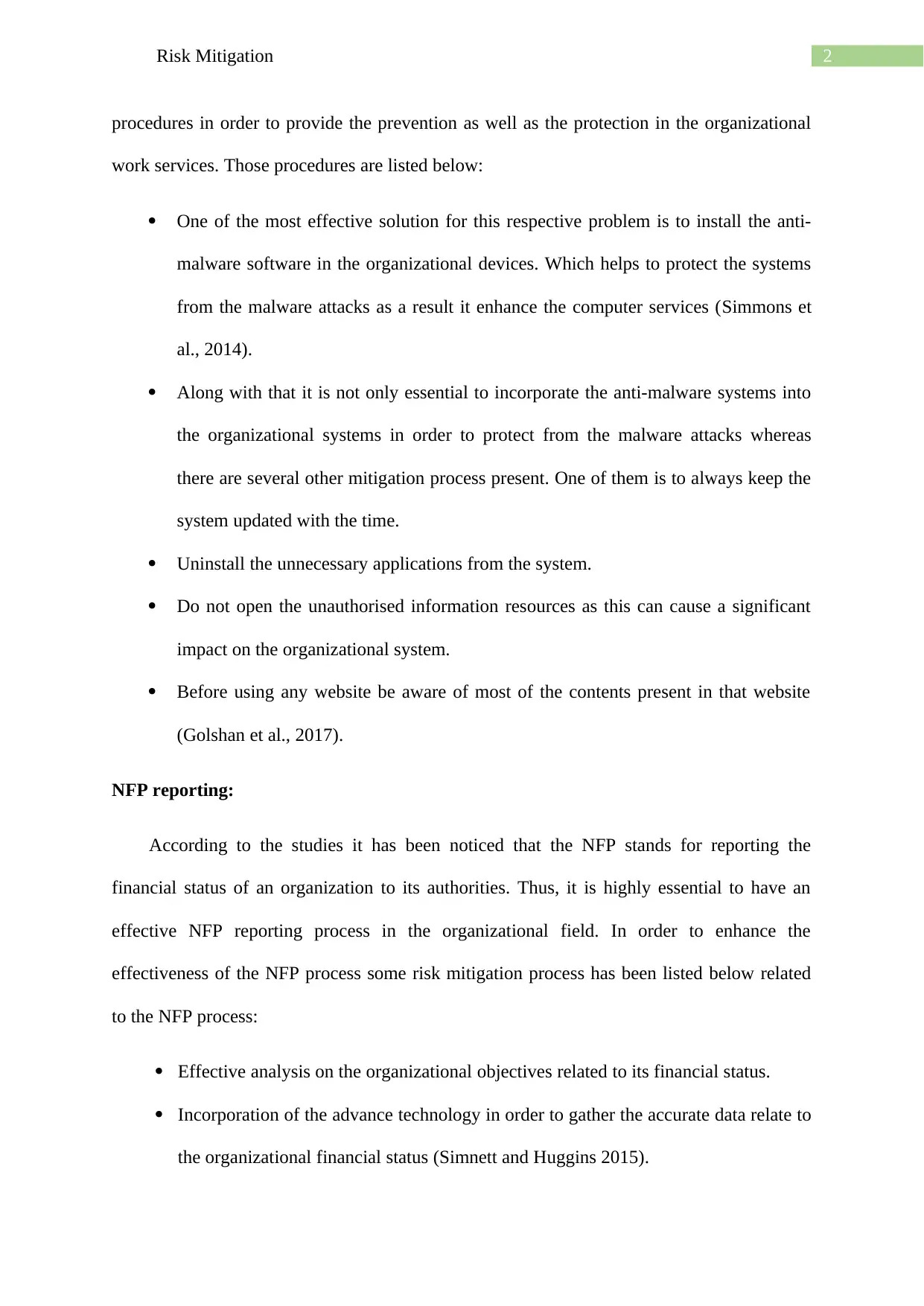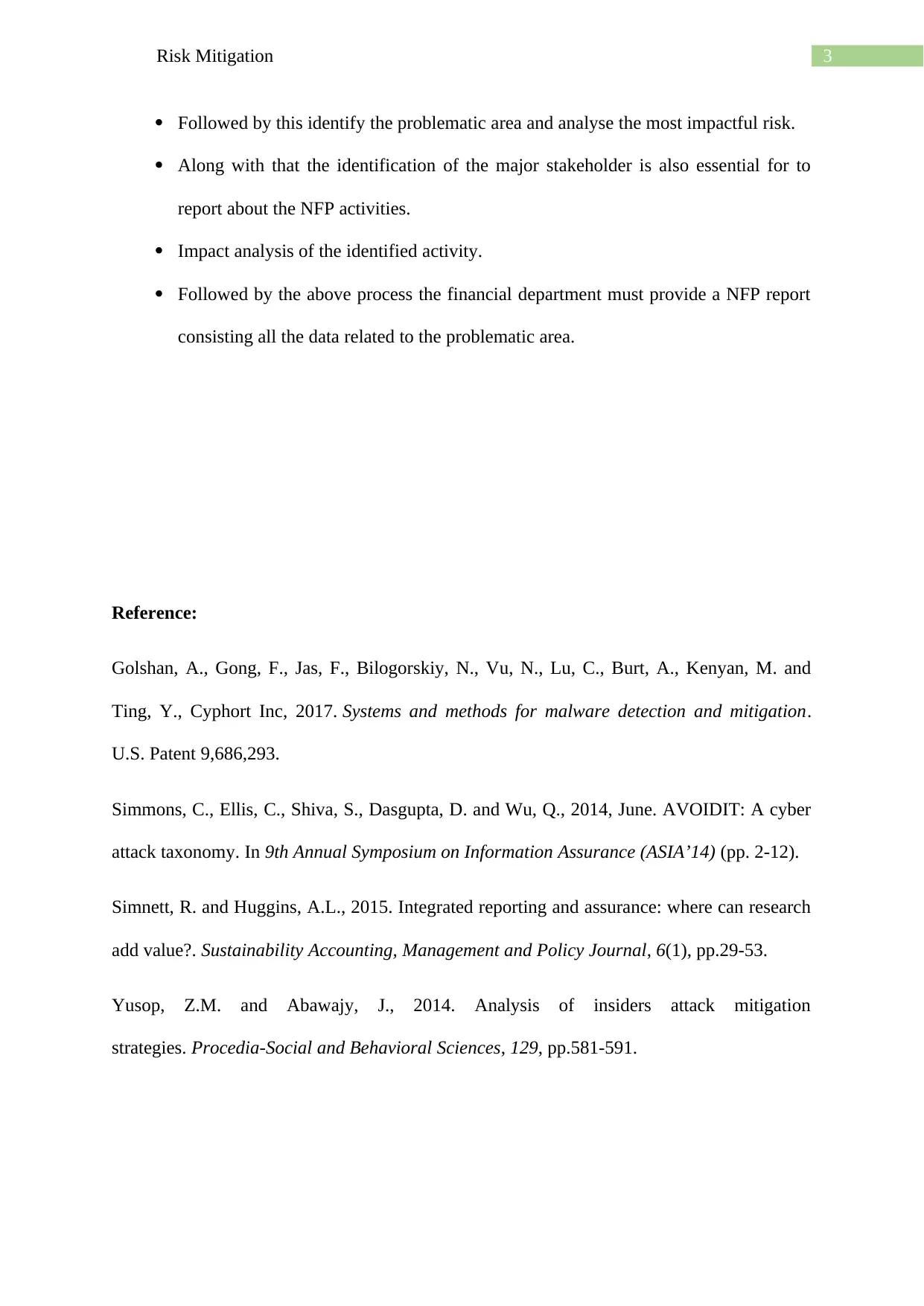Swinburne University INF30020 Risk Mitigation Plan Report
VerifiedAdded on 2022/11/26
|4
|829
|293
Report
AI Summary
This report presents a risk mitigation plan developed for The Sprout Foundation (TSF), a tier-2 not-for-profit organization. The plan addresses key risks identified, including malware attacks and system slowdowns, along with strategies for NFP reporting. The report emphasizes the importance of network monitoring, authentication, endpoint security, and employee training to prevent malware. It also outlines procedures to mitigate system slowdowns, such as installing anti-malware software and keeping systems updated. Furthermore, the report details risk mitigation processes for NFP reporting, including analyzing organizational objectives, incorporating advanced technology for data gathering, and identifying stakeholders. The report offers recommendations for improving TSF's risk management practices, including governance approaches and identifies opportunities for further work in business continuity and disaster recovery.
1 out of 4










![[object Object]](/_next/static/media/star-bottom.7253800d.svg)